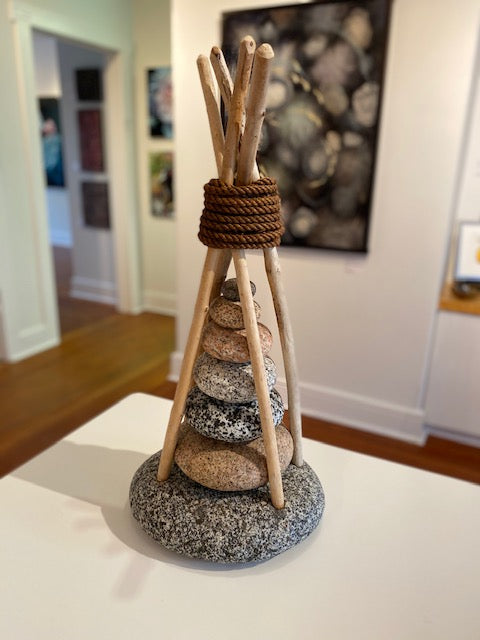You learn something new every day. What is a Killick?

Last week, Nova Scotia artist Bill Gimby hauled a very heavy and very beautiful sculpture up the stairs of the gallery. I loved it immediately. I loved the lines. I loved the stones. I loved the nautical feel.
Do you know what it is? Bill asked. A sculpture? A buoy? I guessed. I got the look that mainlanders often get. It's a killick. Look it up.
Definition of killick (from merriam-webster.com)
1: ANCHOR especially : a small anchor
2: a jury anchor formed by a stone usually bound within sticks of wood

So now I know killick comes from Scots gellock or gavelock for the head of a pickaxe and that the anchor was given that name because a pickaxe is much the same shape as the conventional image of an anchor. The stones sink the anchor and the wooden frame digs into the seabed. The anchors were used as far back as the 16th century when heavy metal anchors were not common or readily available. The Irish also make a claim that it comes from "killech", Irish for wooden anchor. Bill said he took a little artistic license and made the bottom a large stone instead of complete wooden cage. The rope is authentic oiled hemp.
The word Killick is also slang for a Royal Navy sailor with the rank of leading seaman, leading hand or leading rating in the Royal Navy. The badge is the fouled anchor (an anchor with a length of rope twisted around it), worn on the upper left arm in formal uniform.
In my google search I also found that there is an apartment building on the Dartmouth waterfront named Killick. What a great name for a harbour view building. (someone let Killam properties know I have some art for them...)
I love the sculpture even more now that I know the history. It is the perfect piece for a home on the coast. Available for sale at 14Bells.com


Leave a comment